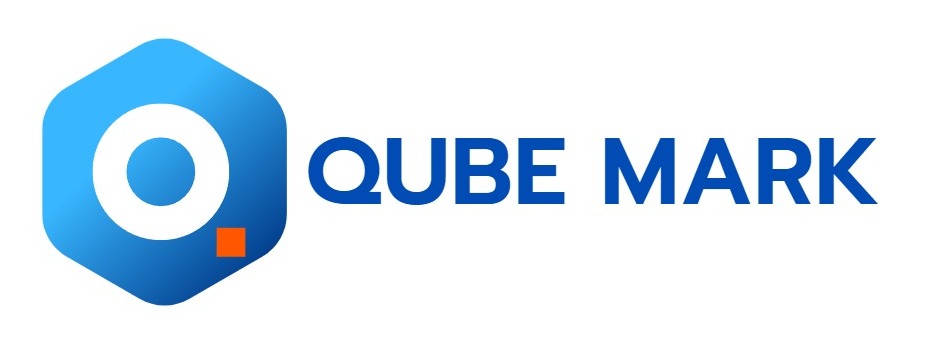NEW YORK, Feb. 4, 2025 -- Report with market evolution powered by AI - The global Programmable logic controller (PLC) market size is estimated to grow by USD 3.01 billion from 2025-2029, according to Technavio. The market is estimated to grow at a CAGR of 3.5% during the forecast period. Increasing demand for compact automation solutions is driving market growth, with a trend towards increasing focus on expanding capability of micro-plcs. However, growing market for industrial pc and dcs as alternatives to plcs poses a challenge. Key market players include ABB Ltd., Beckhoff Automation, Eaton Corp., Emerson Electric Co., Ependion AB, Festo SE and Co. KG, Furukawa Electric Co. Ltd., IDEC Corp., Infineon Technologies AG, Keyence Corp., Lenze SE, Mitsubishi Electric Corp., OMRON Corp., Panasonic Holdings Corp., Parker Hannifin Corp., Robert Bosch GmbH, Rockwell Automation Inc., Schneider Electric SE, Siemens, and Toshiba Corp..
Key insights into market evolution with AI-powered analysis. Explore trends, segmentation, and growth drivers- View Free Sample PDF
Programmable Logic Controller (PLC) Market Scope | |
Report Coverage | Details |
Base year | 2024 |
Historic period | 2019 - 2023 |
Forecast period | 2025-2029 |
Growth momentum & CAGR | Accelerate at a CAGR of 3.5% |
Market growth 2025-2029 | USD 3009.1 million |
Market structure | Fragmented |
YoY growth 2022-2023 (%) | 3.4 |
Regional analysis | APAC, North America, Europe, Middle East and Africa, and South America |
Performing market contribution | APAC at 35% |
Key countries | US, China, Japan, Canada, Germany, UK, India, South Korea, France, and Italy |
Key companies profiled | ABB Ltd., Beckhoff Automation, Eaton Corp., Emerson Electric Co., Ependion AB, Festo SE and Co. KG, Furukawa Electric Co. Ltd., IDEC Corp., Infineon Technologies AG, Keyence Corp., Lenze SE, Mitsubishi Electric Corp., OMRON Corp., Panasonic Holdings Corp., Parker Hannifin Corp., Robert Bosch GmbH, Rockwell Automation Inc., Schneider Electric SE, Siemens, and Toshiba Corp. |
Market Driver
The Programmable Logic Controller (PLC) market is thriving, driven by the increasing adoption of computer control systems in various industries. Input and output devices are key components, with steel and energy industries leading the way. Industrial control systems rely heavily on electronic devices, including PLCs, to manage production processes, power systems, and sensor measurements in buildings. Trends include miniaturization of machinery, compact PLCs, and the integration of wind power and wind turbines. OTEK Corporation's LED technology and digital panel meters are noteworthy innovations. Automated machines, conveyor systems, and packaging systems also benefit from PLCs. Macroeconomic factors, such as auto sales and electrification of vehicles, impact market growth. Industrial verticals like aerospace, defense, chemical, energy utilities, food and beverages, and healthcare are major consumers. PLCs come in various sizes: small, medium-sized, and large. Hardware components include processors, power supplies, and memory. Software capabilities, service, and training are essential. Cyber threats, including malware, ransomware, phishing attacks, and industrial espionage, pose challenges. IIoT, Arduino, Opta, Finder, and microcontrollers are significant players. The Arm Cortex-M7 core and Cortex-M4 core are popular processors. Floating-point units (FPUs), Chrom-ART accelerators, and hardware JPEG accelerators enhance functionality. Relays and switch boxes offer multi-functionality, reducing machine downtime. Industry automation, smart factories, robots, and PC-based and cloud-based controllers are shaping the future.
Micro Programmable Logic Controllers (PLCs), also known as compact or small form factor PLCs, are gaining significant traction in the process and discrete industries for controlling standalone machinery. Their advantages, such as flexible programming, user-friendly operation, communication capabilities, and cost-effectiveness compared to traditional PLCs, are driving their adoption. Initially designed for small machinery with basic serial communication, recent innovations have expanded micro-PLCs' capabilities to manage large machines with high-speed communication, large program memory, and support for multiple communications. These advancements broaden their applications in industrial end-user segments.
Request Sample of our comprehensive report now to stay ahead in the AI-driven market evolution!
Market Challenges
- The Programmable Logic Controller (PLC) market is experiencing significant growth due to the increasing adoption of computer control systems in various industries. Input and output devices are essential components of PLCs, enabling communication between machines and control systems in sectors like steel and energy. Challenges such as vibration, humidity, temperature, electrical noise, and power issues are addressed through advanced hardware and software capabilities. Industrial verticals like the energy and power industry, oil and gas, food and beverages, and pulp and paper are major consumers of PLCs. Miniaturization of machinery and the rise of compact PLCs cater to the needs of smaller production processes. PLCs play a crucial role in industrial control systems, ensuring efficient operation of automated machines in industries like wind power and wind turbines. However, errors and potential malfunctions necessitate the need for skilled technicians and reliable service and training. Macroeconomic factors, including automobile sales and electrification of vehicles, are driving demand for PLCs in industries like auto assembly and smart factories. The integration of AI and IoT systems poses new challenges, requiring cybersecurity measures against threats like malware, ransomware, phishing attacks, and industrial espionage. Key players in the market include OTEK Corporation, Arduino, Opta, Finder, and various microcontroller brands like Arm Cortex-M7 core and Cortex-M4 core. The market is diverse, with offerings ranging from modular PLCs to small and medium-sized PLCs, and rack-mounted PLCs. Hardware components like processors, power supplies, and memory play a crucial role in the functionality and performance of PLCs. Software capabilities, including floating-point units, Chrom-ART accelerators, and hardware JPEG accelerators, enhance the versatility of these systems. In summary, the PLC market is a dynamic and evolving landscape, driven by technological advancements and the increasing demand for automation and efficiency in various industries. Companies must stay updated on the latest trends, challenges, and solutions to remain competitive.
- The industrial automation landscape is evolving, with a clear trend towards PC-based control systems. Traditional rackmount Programmable Logic Controllers (PLCs) are being replaced by more versatile, high-performance PC-based platforms. These systems integrate PLC control, motion control, and Supervisory Control and Data Acquisition (SCADA) functions in a single unit. Open embedded operating systems powering new-generation industrial PCs further enhance their capabilities, offering a PLC's functionality and an operator panel's interface in one device. Distributed Control Systems (DCS) also hold significance, providing advantages not found in either PLCs or industrial PCs, making them a valuable alternative for specific industrial applications.
Discover how AI is revolutionizing market trends- Get your access now!
Segment Overview
This programmable logic controller (plc) market report extensively covers market segmentation by
- Product
- Modular
- Unitary
- Rackmount
- End-user
- Process Industry
- Discrete Industry
- Building Automation
- Geography
- APAC
- North America
- Europe
- Middle East And Africa
- South America
- Type
- Hardware
- Software
1.1 Modular- Modular Programmable Logic Controllers (PLCs) consist of interchangeable modules that can be combined to create a customized automation solution. Unlike single-function PLCs, modular models offer versatility and can be adapted for various applications. Modular PLCs can be arranged in cabinets or mounted on rails for safety and security. These systems are larger and more costly than unitary PLCs but offer advantages such as ease of maintenance and repair, increased memory, and the ability to add multiple systems. Industries with complex processes, such as oil and gas, mining, and automotive manufacturing, are significant end-users of modular PLCs due to their expanded input/output capabilities. As plant complexity increases, modular PLCs are increasingly adopted for future expansion. Furthermore, their enhanced memory modules enable faster operation, contributing to the growth of the global PLC market during the forecast period.
Download a Sample of our comprehensive report today to discover how AI-driven innovations are reshaping competitive dynamics
Research Analysis
The Programmable Logic Controller (PLC) market refers to the computer control systems used in industry automation to manage and automate various processes. These systems utilize input devices to receive data from sensors and output devices to control automated machines. The steel and energy industries heavily rely on PLCs for efficient production and error reduction. PLCs are built with electronic devices such as relays and switch boxes for multi-functionality. Machine downtime is minimized with these advanced systems. However, with the increasing integration of Information Technology in industrial control systems, cyber threats such as malware, ransomware, and phishing attacks pose significant risks. Modern PLCs incorporate advanced features like dual-core microcontrollers with Cortex-M4 cores, flash memory, and static RAM to enhance performance and security.
Market Research Overview
The Programmable Logic Controller (PLC) market encompasses computer control systems used in various industries for automating production processes. These systems utilize Input devices to receive data and Output devices to send control signals. Industries such as Steel and Energy are significant consumers, with PLCs used to manage power distribution, vibration, humidity, temperature, and electrical noise. Modular, Small, Medium-sized, and Large PLCs cater to diverse industrial verticals. Hardware components include Processors, Power supplies, and Software for programming and service, as well as Training. The Energy power and Oil & gas industries, Food & beverages, Pulp & paper, and Wind power sectors benefit from PLCs. Miniaturization of machinery leads to the development of Compact PLCs and the integration of Wind power, Wind turbines, and Sensor measurements. OTEK Corporation's LED technology and Digital panel meters are essential electronic devices. Automated machines may encounter Errors requiring Technicians' intervention. Relays and Switch boxes offer multi-functionality. Machine downtime is minimized through Industry automation, including Conveyor and Packaging systems. PC-based and Cloud-based controllers are emerging trends. Macroeconomic factors, Auto assembly processes, Smart factories, Robots, and the Electrification of vehicles impact the market. Cyber threats, Malware, Ransomware, Phishing attacks, and Industrial espionage pose challenges to IIoT systems. Aerospace & defense, Chemical, Energy utilities, Food & beverages, Healthcare, and various Industrial automation sectors utilize PLCs. Arduino, Opta, IIoT, Finder, and microcontrollers with Arm Cortex-M7 and M4 cores, Floating-point units (FPU), Chrom-ART accelerators, and Hardware JPEG accelerators are essential components. Flash memory and Static RAM are crucial for storage.
Table of Contents:
1 Executive Summary
2 Market Landscape
3 Market Sizing
4 Historic Market Size
5 Five Forces Analysis
6 Market Segmentation
- Product
- Modular
- Unitary
- Rackmount
- End-user
- Process Industry
- Discrete Industry
- Building Automation
- Geography
- APAC
- North America
- Europe
- Middle East And Africa
- South America
- Type
- Hardware
- Software
7 Customer Landscape
8 Geographic Landscape
9 Drivers, Challenges, and Trends
10 Company Landscape
11 Company Analysis
12 Appendix
About Technavio
Technavio is a leading global technology research and advisory company. Their research and analysis focuses on emerging market trends and provides actionable insights to help businesses identify market opportunities and develop effective strategies to optimize their market positions.
With over 500 specialized analysts, Technavio's report library consists of more than 17,000 reports and counting, covering 800 technologies, spanning across 50 countries. Their client base consists of enterprises of all sizes, including more than 100 Fortune 500 companies. This growing client base relies on Technavio's comprehensive coverage, extensive research, and actionable market insights to identify opportunities in existing and potential markets and assess their competitive positions within changing market scenarios.
Contacts
Technavio Research
Jesse Maida
Media & Marketing Executive
US: +1 844 364 1100
UK: +44 203 893 3200
Email: media@technavio.com
Website: www.technavio.com/
This News is brought to you by Qube Mark, your trusted source for the latest updates and insights in marketing technology. Stay tuned for more groundbreaking innovations in the world of technology.









